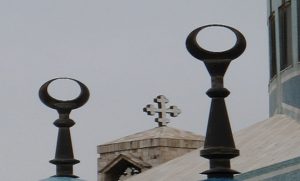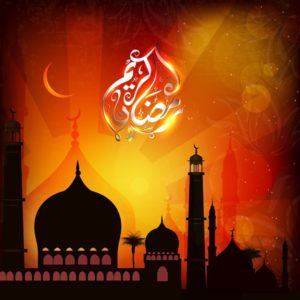Dialogues between Byzantines and Islam
21 July 2016From Arethas, Bishop of Caesarea: ‘Letter to the Emir of Damascus’ [1]
Arethas, Bishop of Caesarea in Cappadocia (850-932) was born in Patras, in the Peloponnese and from 902 onwards was Bishop of Caesarea. He was a student of Fotios the Great and was distinguished for his great scholarship and his extensive interest in Classical and ecclesiastical philosophy. Together with Fotios, he was one of the foremost representatives and prime movers of the general revival of interest in arts and letters which occurred in the second half of the 9th and early 10th century [2]. He was outstanding as an interpreter of the Scriptures, but also as a commentator on Plato, Loukianos (Lucian) and Efsevios (Eusebius). He also wrote scholia on the Revelation, which are a supplement to and development of the interpretation of the Revelation by Andreas of Caesarea.

Among his many exegetical works, his notations, his dogmatic treatises, epistles and homilies [3], there is an interesting letter to the Emir of Damascus, which appears to have been written by Arethas at the behest of Emperor Romanos I Lekapinos (919-944). The letter is a better appreciated as literature rather than apologetics, and, according to some scholars, has been wrongly attributed to Arethas. According to A. Th. Koury, for example, it is impossible to say with certainty which Emperor Romans is meant here and who the Emir of Damascus was to whom the letter was sent. Although they agree that the letter was written circa the end of the 9th or early 10th century, Greek scholars have not been so concerned with whether the letter is genuine, but rather with its contents. Writing about Arethas, D. Sakhas is interested in learning from him about the official and popular views of Islam which were circulating in the 10th century in Byzantium.
What is noticeable in the letter is the sarcasm and irony with which the author deals with the question of Islam, particularly the personality of the Prophet Mohammad, his capacity as a prophet and the efforts of Islam to equate the prophet with the great historical personages of the Holy Scriptures. Arethas is of no mind to accept the spiritual values of Islam or its eschatological ideas. For him, Islam was coarse and materialistic in its mode of expression regarding the present life, and hedonistic in the way it describes the future life, since it depicts paradise with voluptuous and sexual imagery. What is most troubling regarding the authorship is how the sarcastic and ironic nature of the whole work could have come from the pen of an exceptionally well-educated and cultivated person.

Despite the theological sparring, during which each party tried to disparage the basic teachings of the opposing religion, we ought not to forget that the two religions, Islam and Eastern Christianity, had lived side by side for centuries and, despite their differences and deep opposition, each exercised influence on the social and political life of the other. The importance of this symbiosis is stressed by Patriarch Nikolaos the Mystic, who, writing to the Caliph of Baghdad, al-Muktadir in 911/912 said: ‘The two greatest powers of the world, the Saracens and the Romans are dominant and shine like two great luminaries in the firmament. This alone means we should live together as brothers, even though we differ in customs, behaviour and religion’ [4].
Older research considered that this letter from the enlightened Patriarch Nikolaos was addressed to the Emir of Crete or Cyprus. More recent scholarship, however, has shown that it was to the Caliph of Baghdad, al-Muktadir. An interesting subject for research would be an examination of the reconciliation and dialogue between Islam and the heterodox of the time, which had been inaugurated by Patriarch Fotios (858-867 and 877-881) and Patriarch Nikolaos the Mystic, whom we have just mentioned.






